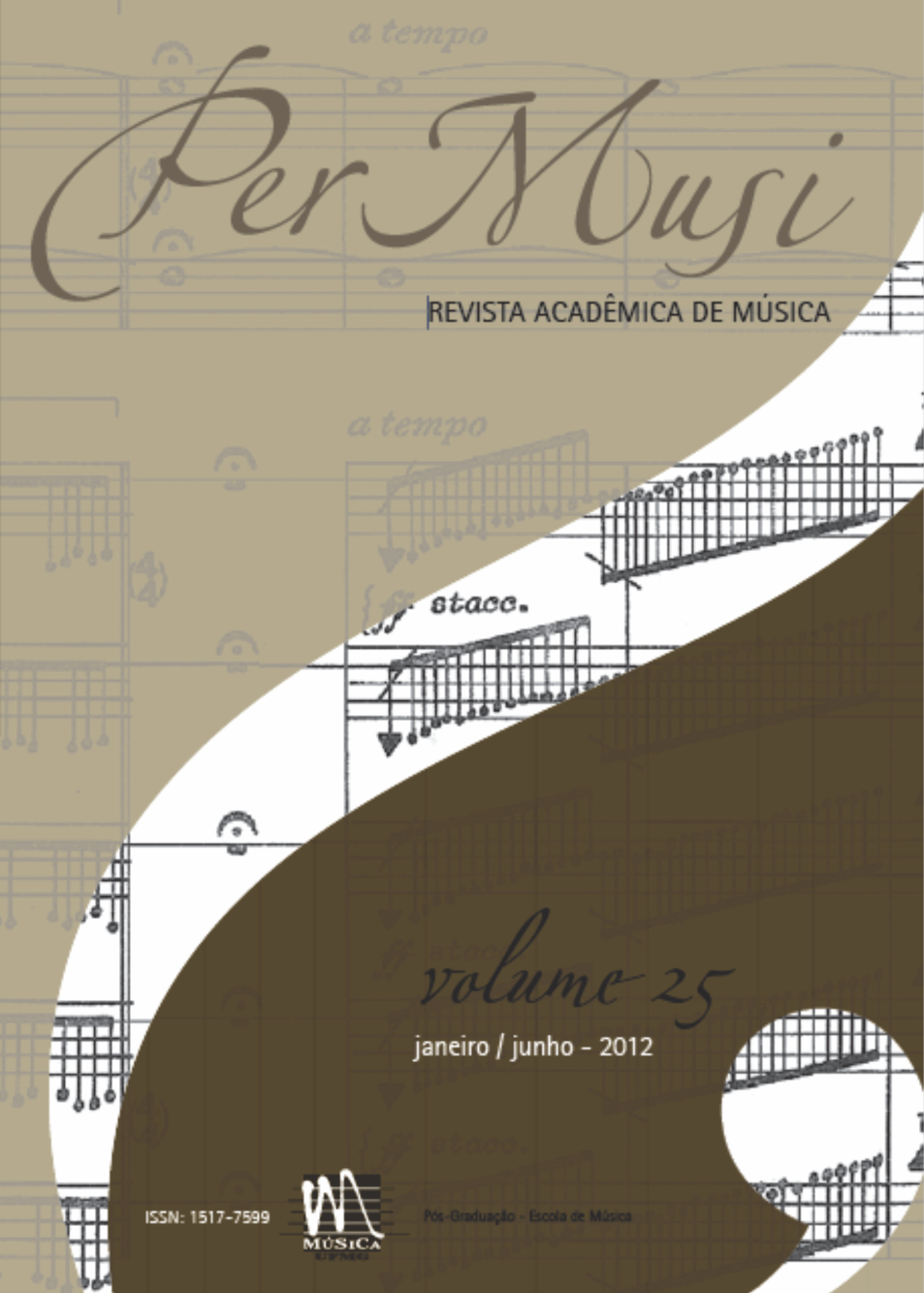Análisis de un análisis
Tarasti y Liszt
Palabras clave:
Liszt, Tarasti, Semiótica musical, Vallée d'ObermannResumen
En su libro fundacional, A Theory of Musical Semiotics, Eero Tarasti realiza un análisis semiótico de la Vallée d'Obermann, del compositor Franz Liszt. En un proceso de sagaz arqueología musical, el autor desvela las distintas capas que colorean la escritura del compositor húngaro. El presente artículo pretende hacer observaciones al margen de este texto, buscando detallar y comentar el análisis de uno de los más importantes teóricos de la semiología.
Referencias
ASCHER, Nelson. Contos húngaros. Introdução. Tradução e seleção de Paulo Schiller. Ed. Hedra: 2010.
BERLIOZ, Hector. Mémoires (1865), Paris, Éditions Flammarion, 2000
MEIRELES, Cecília. Poesia Completa (Viagem, 1939), Rio de Janeiro, Editora Nova Fronteira, 2001.
GAUTHIER, André. Liszt, Classiques Hachette de Musique, Paris, Hachette, 1972.
GROUT, Donald. “The Nature of Romanticism” in GERBOTH, Walter et al. An introduction to music - Selected Readings, Nova Iorque, W.W. Norton, NY, 1964.
PESSOA, Fernando. Obra Poética (Poemas completos de Alberto Caeiro), Rio de Janeiro, Editora Nova Aguilar, 1976.
PROUST, Marcel. “Le Temps retrouvé” in A la recherche du Temps perdu, Paris, Éditions GF Flammarion, 2002.
QUANTZ On Playing the Flute, traduzido para o inglês por Edward Reilly, Londres, Faber and Faber, 1966.
SENANCOUR, Étienne Pivert de. Obermann (1804), traduzido para o inglês por Arthur Edward Waite, Montana, Kessinger Publishing, 2003.
STEFANI, Gino. A theory of musical competence. Semiotica. v. 66, n. 1/3, p.7-22 Amsterdam, Mouton de Gruyter, 1987.
TARASTI, Eero. A Theory of Musical Semiotics, Indiana, Indiana University Press, 1994.
Descargas
Publicado
Número
Sección
Licencia

Esta obra está bajo una licencia internacional Creative Commons Atribución 4.0.

Excepto cuando se indique lo contrario, el contenido de este sitio está sujeto a una Licencia Creative Commons - Atribuição 4.0 Internacional.












